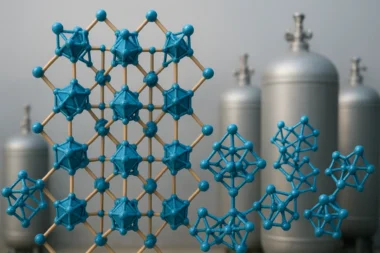Introduction
Solar energy has emerged as a promising solution to address the world’s growing energy demands while reducing carbon emissions. High-efficiency solar cells are at the forefront of this energy revolution, offering unprecedented conversion efficiencies and paving the way for a sustainable future. In this report, we delve into high-efficiency solar cells, exploring their definition and importance in the renewable energy sector and providing an overview of the report structure.
Definition and Importance of High-Efficiency Solar Cells
High-efficiency solar cells are advanced photovoltaic devices designed to convert sunlight into electricity efficiently. Unlike traditional solar cells with lower conversion efficiencies, high-efficiency solar cells leverage innovative materials, structures, and technologies to achieve significantly higher energy conversion rates. Their importance lies in their ability to maximize energy production, reduce reliance on fossil fuels, and mitigate the environmental impact of electricity generation.
Significance in the Renewable Energy Sector
High-efficiency solar cells play a pivotal role in the renewable energy sector, driving the widespread adoption of solar power as a clean and sustainable energy source. By harnessing the sun’s power more efficiently, these solar cells increase energy generation, reduce greenhouse gas emissions, and enhance energy security. They contribute to a transition towards a greener and more sustainable energy landscape by offering a viable alternative to traditional energy sources.
Overview of the Report Structure
This report is structured to provide a comprehensive understanding of high-efficiency solar cells, covering various aspects of their architecture, working principles, components, techniques, technologies, and algorithms. Each section builds upon the previous one, offering a step-by-step guide to unraveling the complexities of these advanced solar cells.
Architecture of High-Efficiency Solar Cells
Types of High-Efficiency Solar Cells
High-efficiency solar cells come in various types, each with unique characteristics and advantages. Common types include crystalline silicon, thin-film, and multi-junction solar cells. Crystalline silicon cells are the most widely used and offer excellent performance, while thin-film cells are known for their flexibility and versatility. Multi-junction solar cells, on the other hand, utilize multiple layers of different semiconductor materials to capture a broader spectrum of sunlight.
Structure and Layering of Solar Cells
The architecture of high-efficiency solar cells involves carefully designed layers and interfaces to optimize light absorption, charge separation, and current collection. These layers typically include an absorber layer, transparent conductive coatings, and back reflectors. The absorber layer captures sunlight and generates electron-hole pairs, while the transparent conductive coatings and back glasses enhance light absorption and reduce surface reflections.
Transparent Conductive Coatings and Antireflective Layers
Transparent conductive coatings and antireflective layers are crucial components in high-efficiency solar cells. Transparent conductive coatings, usually made of materials like indium tin oxide (ITO) or zinc oxide (ZnO), serve as electrical contacts to extract current from the solar cell. Antireflective layers, such as silicon nitride or titanium dioxide, minimize the reflection of sunlight and enhance light absorption, improving the solar cell’s overall efficiency.
Working Principles of High-Efficiency Solar Cells
Photovoltaic Effect: Conversion of Sunlight into Electricity The fundamental principle behind high-efficiency solar cells is the photovoltaic effect. When sunlight, composed of photons, strikes the semiconductor material of the solar cell, it excites electrons, causing them to be released from their atoms. This process generates electron–hole pairs. The semiconductor’s unique properties enable the separation of these charge carriers, with the electrons moving toward the n-type region and the holes toward the p-type region.
Electron Flow and Charge Separation The junction between the n-type and p-type regions of the semiconductor generates an electric field that pushes the electrons toward the n-side and the holes toward the p-side once the electron-hole pairs have separated. This flow of electrons constitutes an electric current, which can be extracted from the solar cell and utilized for various applications.
Electrical Characteristics and Maximum Power Point Tracking High-efficiency solar cells exhibit specific electrical characteristics influencing their performance. Key parameters include the open-circuit voltage (Voc), short-circuit current (Isc), fill factor (FF), and maximum power point (MPP). The MPP is the operating point at which the solar cell generates the maximum power output. To ensure optimal performance, full power point tracking (MPPT) algorithms are employed to continually adjust the operating conditions of the solar cell and maintain it at its MPP, even under varying sunlight intensity and temperature conditions.
Components of High-Efficiency Solar Cells
Semiconductor Materials: High-efficiency solar cells utilize different semiconductor materials with bandgap properties. Crystalline silicon (c-Si) is the most commonly used material due to its abundance and reliability. Other materials, such as gallium arsenide (GaAs) and perovskite, offer higher conversion efficiencies but may have higher costs or stability concerns. The choice of semiconductor material depends on factors such as efficiency goals, cost, and specific application requirements.
Absorber Layers and Doping Techniques: The absorber layer in a high-efficiency solar cell is responsible for absorbing sunlight and generating electron-hole pairs. It is typically a thin layer of semiconductor material tailored to have a suitable bandgap for efficient light absorption. Doping techniques, such as introducing impurities to alter the electrical properties of the material, are employed to enhance the performance and control the charge carrier behavior within the absorber layer.
Contacts and Metal Grids for the Current Collection: Efficient current collection is crucial in high-efficiency solar cells to ensure the generated charge carriers are collected and directed towards the external circuit. Contacts of conductive materials, such as metal or transparent conductive oxides, are strategically placed to manage the electrons and holes. Metal grids are often used to facilitate the collection of charge carriers, minimizing shading losses and maximizing current flow.
Back Reflectors and Passivation Layers: Back reflectors and passivation layers are essential for high-efficiency solar cells. Reflectors improve light trapping within the solar cell by reflecting the unabsorbed light into the absorber layer for further absorption. Passivation layers help reduce surface recombination, where charge carriers recombine at the surface instead of contributing to the current flow. Passivation techniques, such as chemical treatments and thin-film coatings, enhance the performance and overall efficiency of the solar cell.
Techniques and Technologies for Enhancing Efficiency
Light Trapping and Photon Management Strategies: Various light trapping and photon management strategies enhance light absorption within high-efficiency solar cells. These techniques aim to increase the optical path length of sunlight within the absorber layer, allowing for more efficient absorption of photons. Examples include textured surfaces, nanostructures, and photonic crystals that manipulate the propagation and scattering of light, ensuring a higher probability of interaction with the semiconductor material.
Surface Passivation Techniques: Surface recombination, where charge carriers recombine at the surface instead of contributing to the current, can significantly reduce the overall efficiency of a solar cell. Surface passivation techniques mitigate this effect and improve charge carrier lifetime. These techniques involve depositing thin layers or coatings to reduce surface defects and trap states, enhance surface quality, and minimize recombination losses.
Tandem and Multi-Junction Solar Cells: Tandem and multi-junction solar cells are advanced designs that enable more efficient energy conversion by combining multiple semiconductor layers with different band gaps. Each layer absorbs a specific portion of the solar spectrum, allowing for broader light absorption and higher efficiency. Tandem and multi-junction solar cells are particularly effective in capturing a wide range of sunlight, including both high- and low-energy photons.
Hot Carrier Extraction and Thermal Management: High-energy photons absorbed in the semiconductor material can generate “hot carriers” with excess energy. Efficient extraction and utilization of these hot carriers can significantly improve the overall efficiency of a solar cell. Advanced techniques, such as hot carrier extraction, selective contacts, and thermophotovoltaics, are employed to capture and utilize the excess energy of hot carriers. Effective thermal management strategies are also implemented to dissipate excess heat, preventing performance degradation and ensuring long-term stability.
Algorithms and control systems
Maximum Power Point Tracking (MPPT) Algorithms: To maximize the power output of high-efficiency solar cells, MPPT algorithms are employed. These algorithms continuously monitor the operating conditions of the solar cell, such as irradiance level and temperature, and dynamically adjust the operating point to maintain it at the maximum power point. MPPT algorithms ensure the solar cell operates optimally, maximizing energy conversion efficiency even in varying environmental conditions.
Feedback and Control Systems for Optimal Operation: Advanced feedback and control systems are essential for optimal operation and performance in high-efficiency solar cells. These systems monitor various parameters, such as voltage, current, and temperature, and adjust the operating conditions accordingly. By maintaining optimal voltage and current levels, these control systems ensure efficient power conversion and protect the solar cell from potential damage or performance degradation.
Smart Grid Integration and Energy Management: As renewable energy sources, including high-efficiency solar cells, play an increasingly important role in the energy landscape, smart grid integration and energy management systems become crucial. These systems enable seamless integration of solar energy into the existing power grid, optimizing energy generation, storage, and distribution. Advanced algorithms and control strategies are employed to balance energy supply and demand, manage grid stability, and enable efficient solar energy utilization in a smart grid environment.
Applications of High-Efficiency Solar Cells
Solar Power Generation for Residential, Commercial, and Industrial Use: High-efficiency solar cells find widespread application in generating electricity for residential, commercial, and industrial purposes. They are used in solar panel installations, rooftop systems, and solar farms to harness solar energy and convert it into electricity. With their increased efficiency, these solar cells offer higher power output, enabling more significant energy generation and reducing reliance on traditional power sources. They contribute to the growth of renewable energy and help achieve sustainability goals.
Integration into Building Materials and Architecture: One of the exciting applications of high-efficiency solar cells is their integration into building materials and architecture. Building-integrated photovoltaics (BIPV) utilize solar cells seamlessly incorporated into windows, facades, and roofing materials, enabling electricity generation while serving functional and aesthetic purposes. This integration allows buildings to become energy producers, reducing dependence on the grid and promoting sustainable construction practices.
Solar-Powered Vehicles and Transportation: The automotive industry is exploring using high-efficiency solar cells to power electric vehicles (EVs) and enhance their range and efficiency. Solar panels integrated into the vehicle’s surface, such as the roof or hood, can capture sunlight and convert it into electricity to supplement the vehicle’s battery power. This technology enables increased driving range and reduces the need for frequent recharging, making EVs more practical and sustainable for everyday use.
Space and Satellite Applications: High-efficiency solar cells have been extensively used in space and satellite applications for many years. They power satellites and space probes, providing the necessary energy to operate scientific instruments, communication systems, and other equipment in the harsh space environment. The high conversion efficiency of these solar cells ensures reliable power generation and enables long-duration missions that explore distant regions of our solar system.
Conclusion
High-efficiency solar cells represent a significant breakthrough in the field of renewable energy. Their advanced architectures, working principles, components, techniques, technologies, and algorithms have substantially improved solar energy conversion efficiency. With their exceptional performance and increasing cost-effectiveness, high-efficiency solar cells drive the widespread adoption of solar power and play a vital role in transitioning to a sustainable energy future.



